Fall is the Best Time to Plant Poppy Flower Seeds
Updated: Sep. 09, 2022
Plant poppies in fall for a jaw-dropping garden display of summer color. Learn how to transplant and grow poppy flower seeds.
Plant Poppy Flower Seeds in Fall
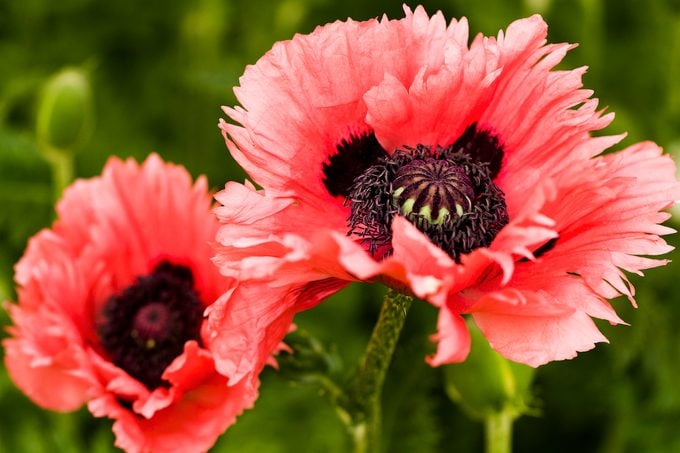
A summer garden filled with colorful poppy flowers starts in autumn. Either let your poppies dry out and naturally scatter seeds at the end of the growing season or sprinkle a packet of seeds over bare soil in a sunny spot. Whichever way you get the seeds to the soil, they require light to germinate, so ignore the urge to tuck them in. Fall-sown poppy flower seeds germinate when the time is right. Some sprout in fall and overwinter, even in cold climates.
Those seedlings usually become the biggest, most vigorous plants—and they bloom the earliest. Other fall-sown seeds wait until early spring to emerge. If you miss fall planting time, scatter poppy seeds whenever there’s no snow on the ground during winter through very early spring. The cold-tolerant seedlings germinate weeks before cosmos, zinnias and other self-sowing annuals.
Check out 9 butterfly flowers that are easy to grow from seed.
Transplanting Poppies With Taproots
During fall and at the seedling stage is the best time to transplant. Because all poppies have taproots, moving plants, even very young seedlings, is tricky though still possible. “I’ve transplanted many poppies!” says Jennifer Bouseelot, an Iowa native who teaches horticulture at Colorado State University.
Unlike plants with fibrous roots, a taprooted plant is unable to quickly grow new roots to make up for damage. “Taproots don’t like to be disturbed,” Jennifer says. Be sure to dig deep and keep the soil as intact as possible. To transplant a poppy flower, including a seedling, dig deep to lift the plant out of its current space, being careful to keep the soil intact around its roots. Slide it gently into a new hole, firm it in and keep moist until the plant settles.
Check out the ultimate guide to planting spring bulbs.
When to Divide Oriental Poppies
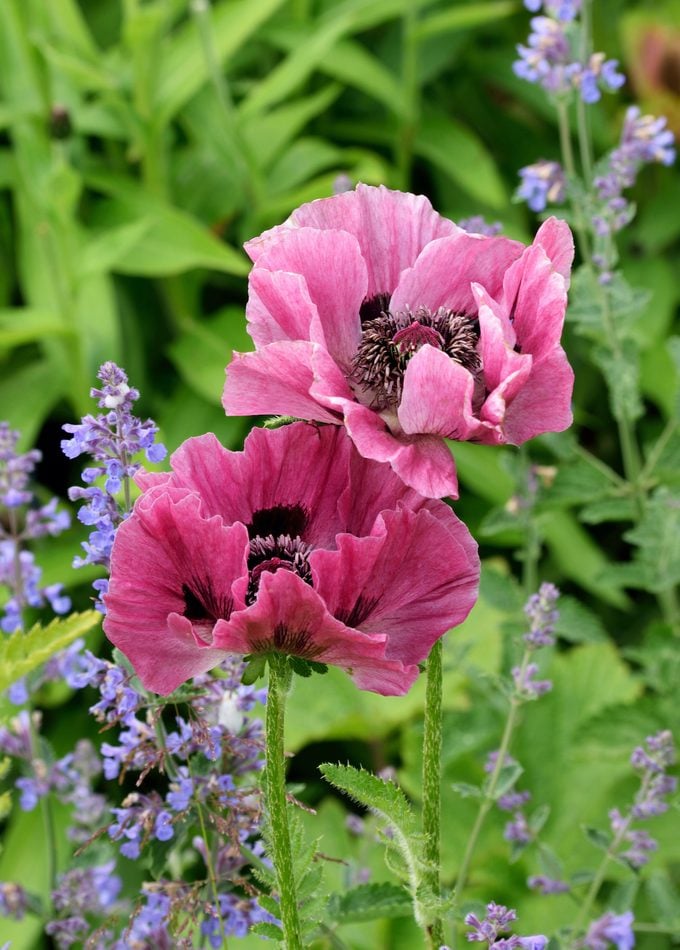
If you’ve ever wondered why the big seedpods of your glorious Oriental clump never seems to sow any seeds, it’s because most of the plants sold today are complex hybrids. Crossbred from three original species (Papaver orientale, P. pseudo-orientale and P. bracteatum), most, if not all, of the seeds in those pods are sterile. You can still multiply that clump by making a division in fall.
And if the plant is growing in a lackluster spot, move the whole thing. The secret is to work with the plant’s natural cycle. Oriental poppies die and disappear in summer, a survival trick from their original Persian homelands (in what is now Iran), where the mountains are hot and dry in summer.
In fall, new growth appears and that’s the signal that it’s time to dig. The autumn urge to grow helps poppies settle in quickly, and the roots won’t have to support fully grown foliage and flowers.
Here’s why you should keep planting perennials in fall.
Pick the Perfect Poppy Flower
Poppies may seem fragile, but they’re hardy characters, shrugging off cold winters and dry summers. Even the big, lush Orientals flourish in dry areas. “The poppies that I grow get almost no irrigation,” Jennifer says. “They only receive the 15 inches of annual rainfall that we get along the front range of Colorado. But they thrive!”
Psst—did you know that poppies are the August birth flower?
Iceland Poppy
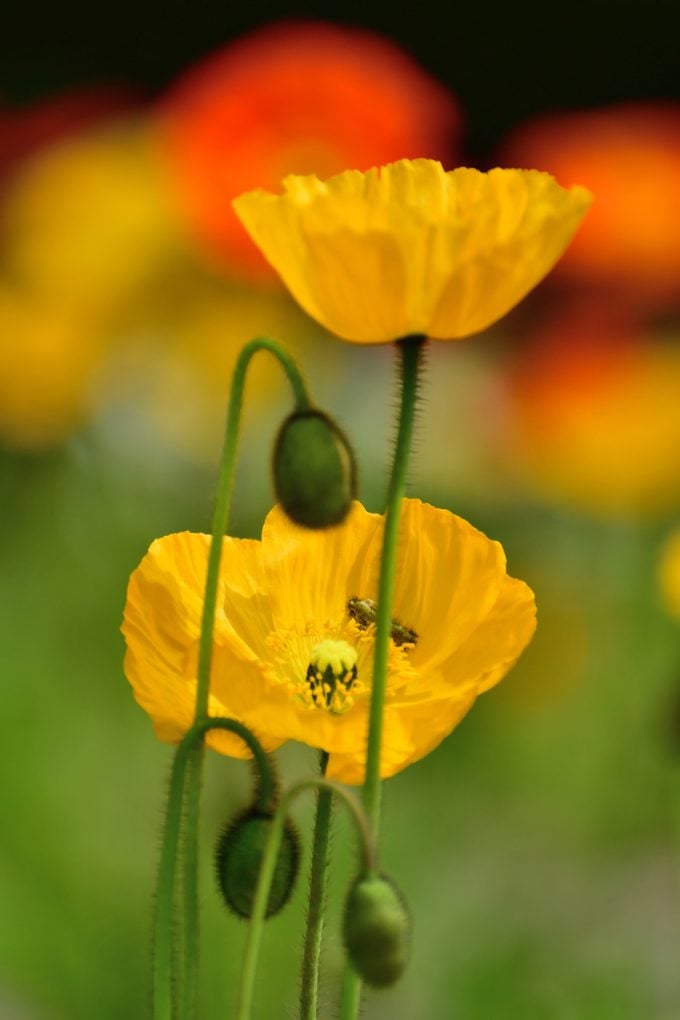
Growing from seed is always the best way to experience the charms of annual poppies or to expand your collection of cheerful, citrus-colored biennial Iceland poppies (Papaver nudicaule), a sure sign of spring at garden centers. “Iceland poppy is kind to me,” Jennifer says. “It germinates well.” Sow the seed in fall—like all seed-grown poppies, it does best in cool weather.
California Poppy
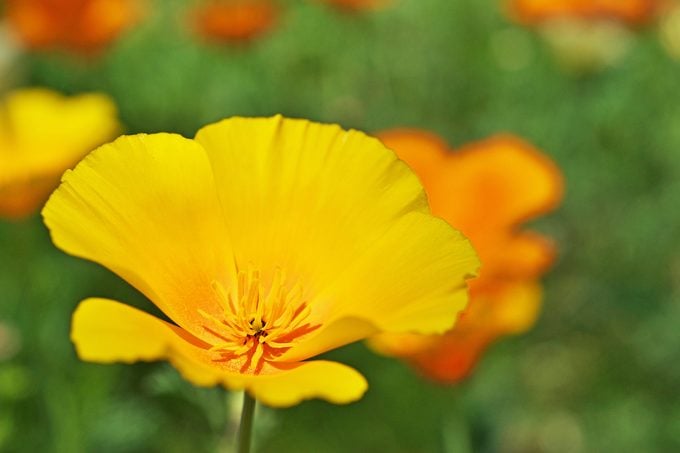
For on-trend color, sow gleaming orange California poppies (Eschscholzia californica) in fall. Creamy white, rosy purple, glowing red-orange and frilly double-flowered versions are lovely alongside the classic orange. Plant burgundy celosia behind them in spring for a stylish splash.
Corn Poppy
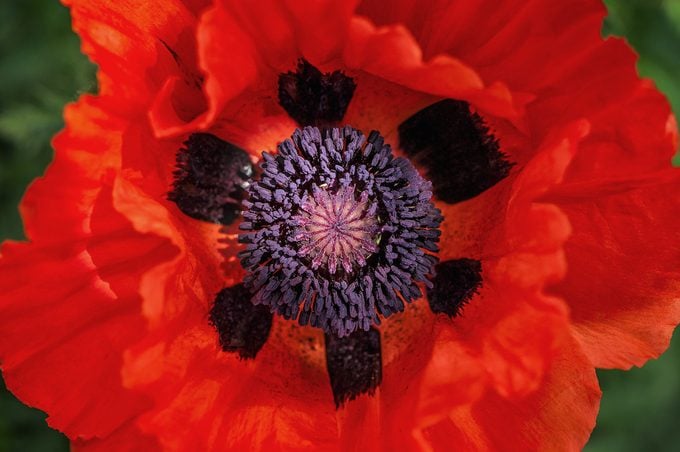
Bright red Flanders (Papaver rhoeas), also known as field or corn poppies, are grown for their spectacular color. This fiery bloom is splashed across Van Gogh’s paintings. It later became the inspiration for Poppy Day, with paper poppies distributed in memory of the fallen soldiers of World War I and the pretty wildflowers that sprouted profusely in the disturbed ground.
In your garden, try sowing Flanders poppies among ornamental grasses, next to silvery gray plants or along a white fence for maximum impact.
Add more bold color with the top 10 red hummingbird flowers.
Shirley Poppy
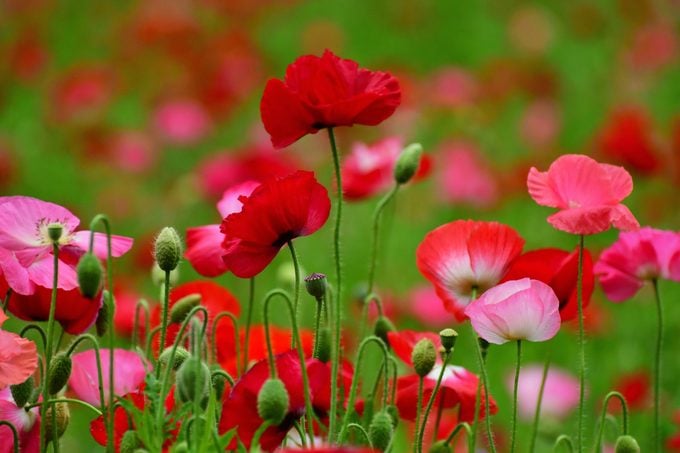
Embrace the unexpected with delicate Shirley poppies (Papaver rhoeas). This two-toned bloom originated in the late 1800s in Shirley, England, when a vicar spotted an oddball among thousands of poppies. Instead of being all red, its petals had white edges.
From the seeds of that mutant, he developed the Shirley strain, a mix of pinks, salmons and whites with contrasting edges. Single colors are available, but the old-time mix is the most fun. You never know what color the blooms will be until the plump buds pop!
Prickly Poppy
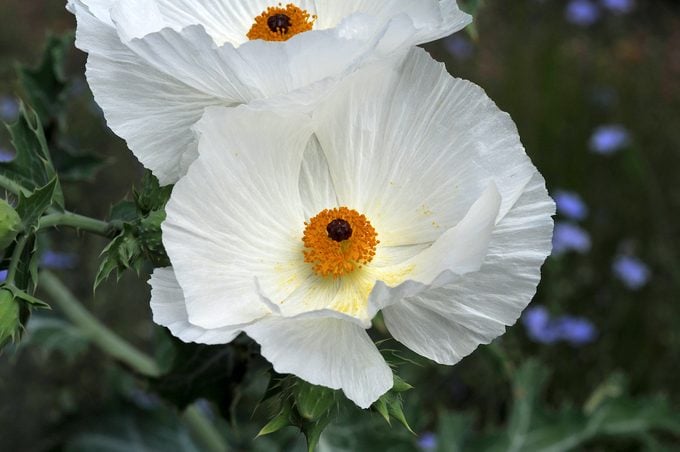
Keep an eye on seed books and garden centers for different poppy varieties, such as the snowy white crested prickly poppy (Argemone polyanthemos). Jennifer says, “The blousy white flowers are a visual treat during the dry, hot summers of the West.”
Old-Fashioned Poppies
If you spot a big, dense bed of fluffy orange-red Oriental-like poppies blooming near an old house, you’ve discovered a heritage perennial of now unknown name and origin. The plant looks a lot like a double Oriental, but instead of staying in a clump, this antique poppy flower spreads quickly by underground stems called stolons that root as they go.
This perennial rarely shows up on the market. If you want to try growing it and spot a big bed in bloom, make the acquaintance of the gardener. They might share with you! Come back in fall and dig deep to get a start for your own yard.
Next, discover the top 10 gorgeous cottage garden plants to grow.




















